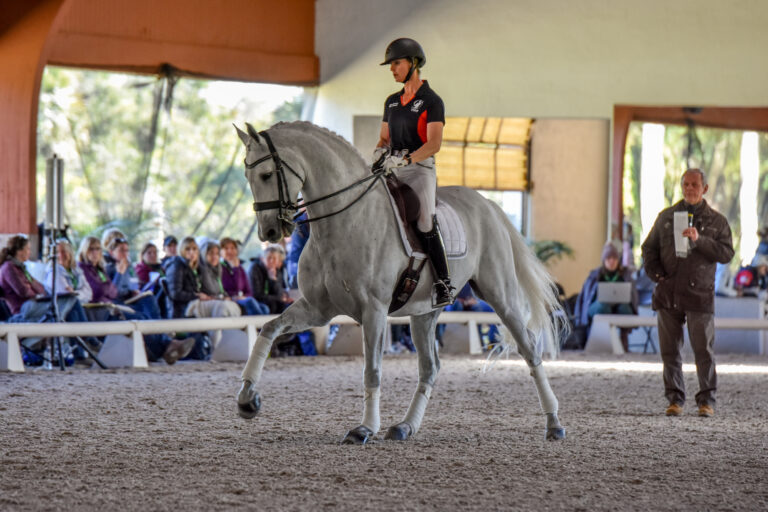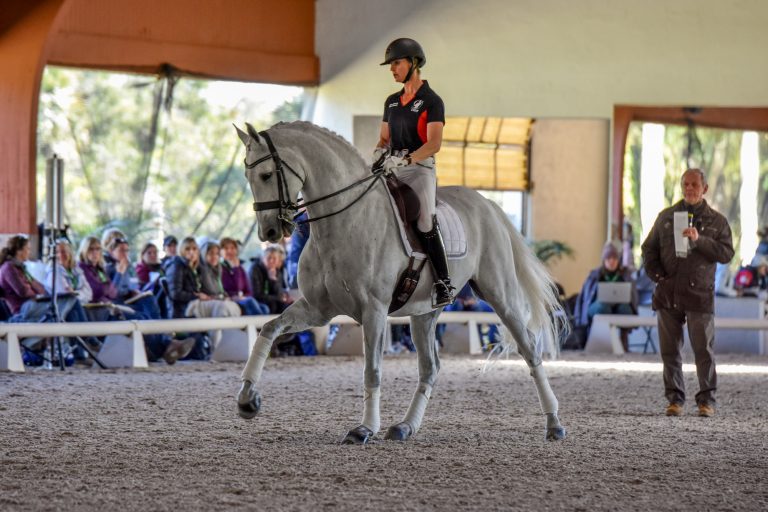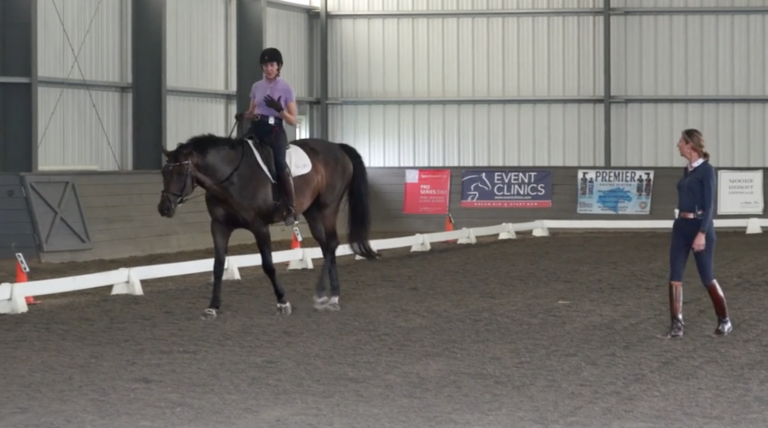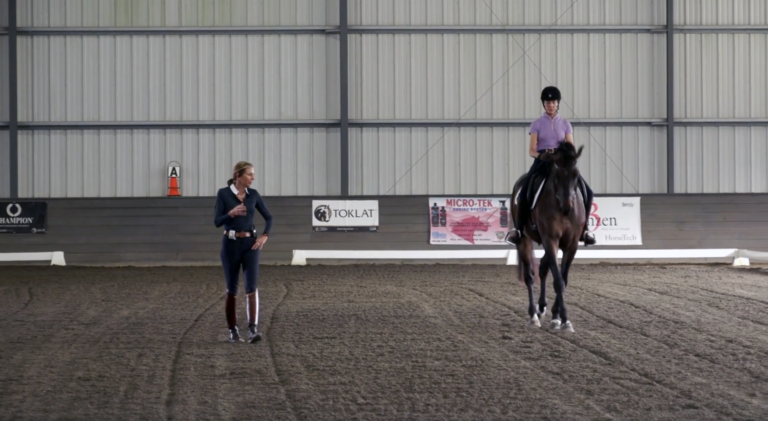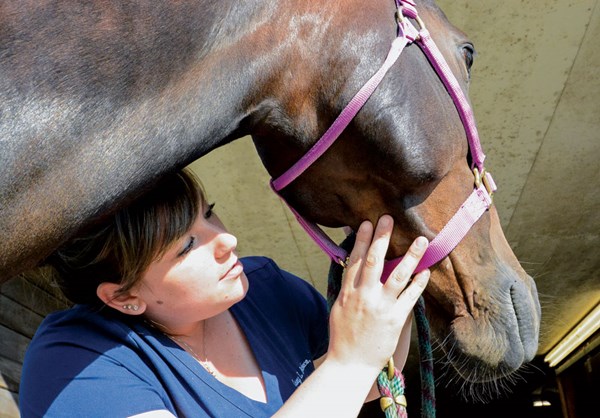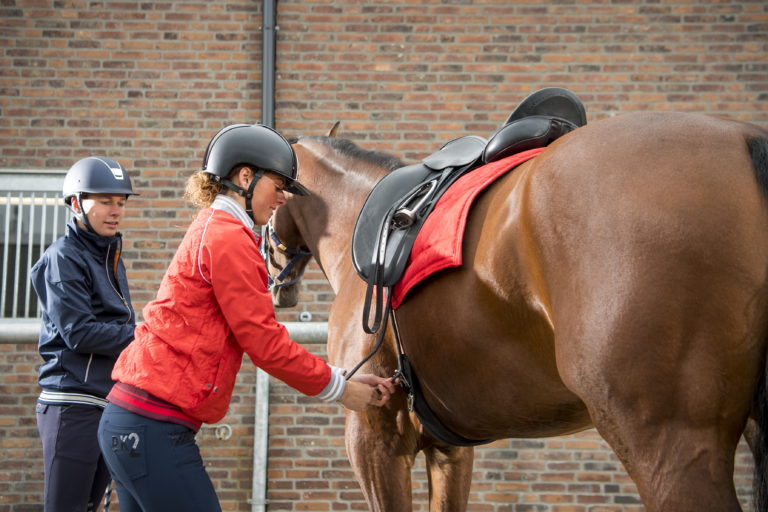To improve your horse’s suppleness and agility on bending lines …
Imagine the curve of your horse’s spine bending
similarly to the way a whip flexes (poll to tail).
Pay close attention to the turn of the horse’s head
(or flexion at the poll) as that helps curve the neck
correctly. Moving your horse laterally sideways on circles
and in corners makes going straight more fluid and
forward. —Holly Mason
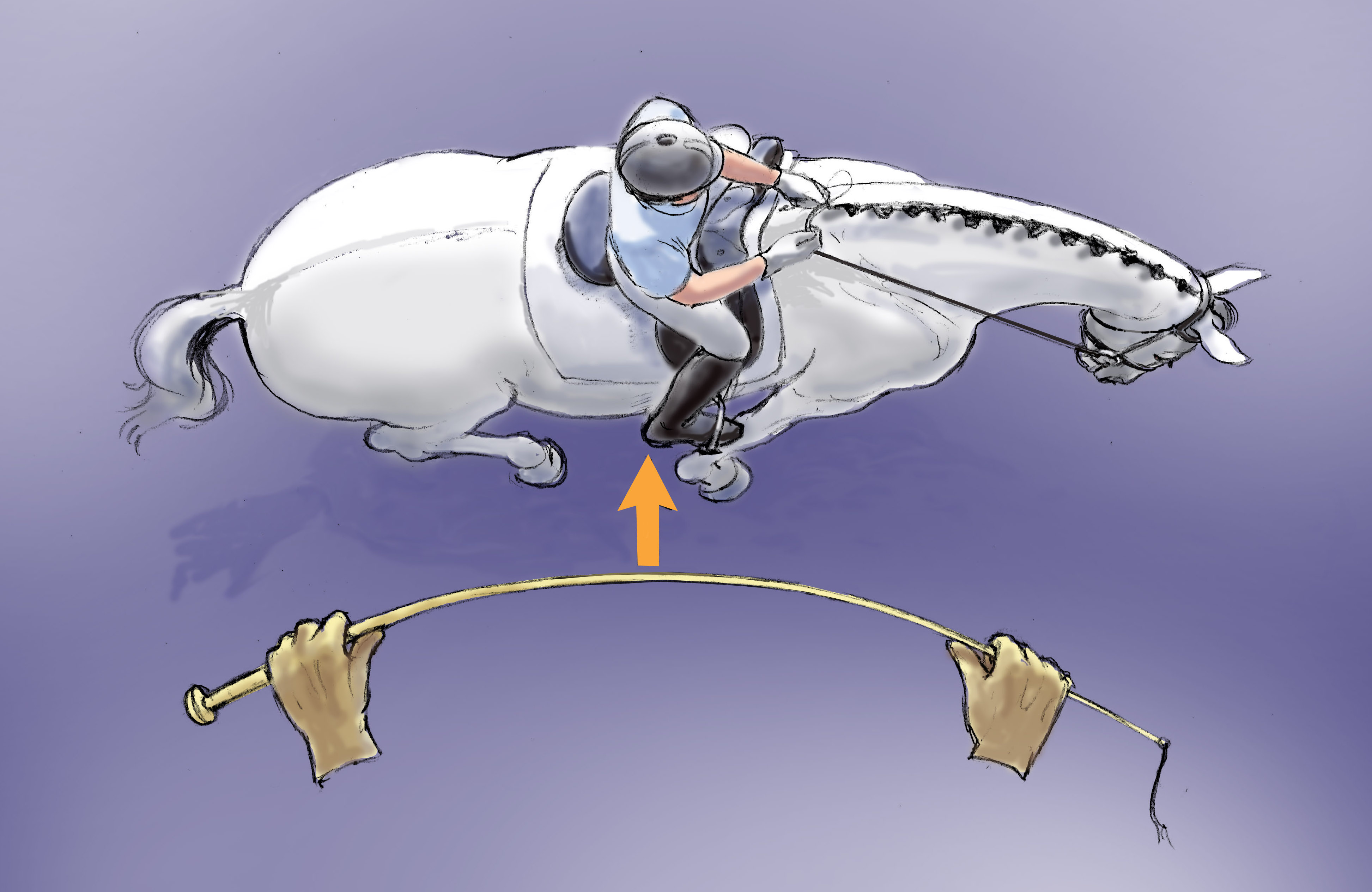
Illustration by Sandy Rabinowitz)
Holly Mason is a dressage instructor and author of It’s Never
Too Late, a comprehensive overview of the biomechanics of
horse and rider. Having studied with many of the modern
masters of dressage, Holly has coalesced the biomechanical
concepts of the classical principles into teaching methods
designed for contemporary riders. Find her book and DVD,
“Focus on Flexibility,” on her website dressagebydesign.com.
Send your Solutions idea to
DressageToday@aimmedia.com.


